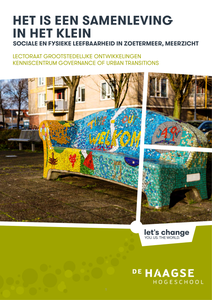SummaryConstructed wetlands have been used for decades on industrial areas to treat stormwater. European regulations and local ambitions for water quality dictate lower emissions before the water is discharged to the drainage system, surface water or infiltrated to ground water. The increase in the required removal efficiency requires a better understanding of the characteristics of pollutants and cost-effective performance of constructed wetlands. In this chapter detailed characteristics of stormwater from (industrial) areas is given together with monitored removal efficiencies and the cost of constructed wetlands. Some case studies with constructed wetlands are selected and reviewed in this chapter which can be regarded as Best Management Practices (BMPs). In most cases the constructed wetlands are not monitored in detail but perceived to be effective. Long-term performance, however, remains an issue. New monitoring techniques such as underwater drones and full scale testing can be applied to get new insights on optimizing the hydraulic capacity and removal efficiency of wetlands. Last but not least: international knowledge exchange on constructed wetlands and new monitoring techniques can be promoted by interactive online tools.
DOCUMENT
Bij het onderzoek naar mogelijke effecten van een windmolenpark in het IJsselmeer is ETFI uitgegaan van de vele onderzoeken die er inmiddels, in Nederland maar ook internationaal, bestaan. Op deze manier zijn conclusies en oordelen, zowel geïnspireerd door voorvechters van windenergie als van tegenstanders, zowel bij geplande als bij reeds aangelegde windmolenparken, geïnventariseerd. De conclusie van dit literatuuronderzoek luidt dat de studies onvoldoende bewijs leveren, zowel voor het ontstaan van schade aan de toeristische sector als voor het ontbreken van die schade. Dit onderzoek moet dan ook niet gelezen worden als een aanbeveling vóór of tegen windmolenparken. De waarde van het onderzoek is dat het de publiek toegankelijke studies uit binnen en buitenland met betrekking tot de relatie tussen windparken en toerisme bijeen brengt en systematisch analyseert. Zodoende brengt het de risico’s en mogelijkheden beter in beeld zodat in alle scenario’s —met of zonder windmolens— afwegingen gemaakt kunnen worden waarin alle belangen gerespecteerd worden.
DOCUMENT

Om te zien hoe sociale samenhang vandaag vorm krijgt, hebben we twee case studies van activiteiten die bewoners van Meerzicht gezamenlijk ondernemen beschreven. Het gaat dan specifiek om regelmatig terugkerende activiteiten met een gemeenschappelijk doel, die mensen samenbrengen. Dat is van belang omdat juist de herhaling en doelgerichtheid sociale connecties mogelijk maakt. Deze connecties zijn van belang vanwege hulpbronnen zoals: informatie; diensten; materiële goederen en vertrouwen. In het geval van het vissen zien we een afname van sociale verbanden via het verenigingsleven. De in Meerzicht gevestigde hengelsportvereniging Het Pontje heeft duidelijk last van een vergrijzend kader. Maar we zien tegelijkertijd een gemeenschap van vissers in het Westerpark. Vissers die komen alleen of in kleine groepjes, waarbij men de andere vissers groet of een praatje maakt. Recent landelijk onderzoek onder sportvissers (Mulier instituut, 2017) sluit hier goed op aan. Het gaat veel vissers om natuurbeleving en om het tot rust komen. Daarnaast noemen, met name jongeren (16-20 jaar), gezelligheid en sociale contacten als belangrijk motief. Contact met andere vissers is vooral gericht op uitwisselen van kennis omtrent vistechnieken en op het leren kennen van andere mensen. Ook bij het moestuinieren valt op dat dit een plek/activiteit is die je alleen doet (rust geeft) en toch ook samendoet. De SCPstudie Tussen groen en grijs (2016) gaat ook in op de sociale kanten van tuinieren. Onderzoek laat zien dat op volkstuinen met een heterogene groep tuinders bridging mogelijk is. ‘De kracht van het kleine ontmoeten’ wordt het genoemd. Volkstuinen hebben als bijzonder kenmerk dat het contact veel non-verbaal verloopt: de onderlinge relaties worden in eerste instantie door ‘zichtbaarheid’ en ‘nabijheid’ gevormd. Mensen worden hier dus minder snel uitgesloten op basis van taal, beroep of woonplek. Het is bijzonder om te zien dat hier zowel bewoners uit Meerzicht- West, als uit Meerzicht-Oost actief zijn. Alle aspecten van sociale samenhang zijn we in Meerzicht tegen gekomen: ● ‘contact en ontmoeting’: Denk aan contact tussen buren, of ontmoetingen in de openbare ruimte. ● ‘sociaal netwerk en dingen samendoen’: We hebben voorbeelden gehoord van moeders die samen met de kinderen naar de Stadsboerderij gaan; mensen die samen wandelen, koffiedrinken of vissen natuurlijk. ● ‘wederzijdse hulprelaties’: Buren helpen en/of ondersteunen elkaar. ● ‘gezamenlijke activiteiten’: Er zijn diverse plekken waar men in georganiseerd verband vrijwilligerswerk kan doen, zoals sportclubs, de moestuinvereniging en de voedselbank. Er is een groot aantal bewonerscommissies actief. Debuurtvereniging in de Waterbuurt is een initiatief dat door buurtbewoners gedragen wordt. Hier spelen ‘best persons’ een belangrijke rol. De hier beschreven casussen geven het belang van aan van activiteiten die bewoners in lossere verbanden min of meer gezamenlijk ondernemen. Ook de plekken waar vrijwilligers werken hebben eenzelfde functie als knooppunt van sociale connecties.
DOCUMENT
